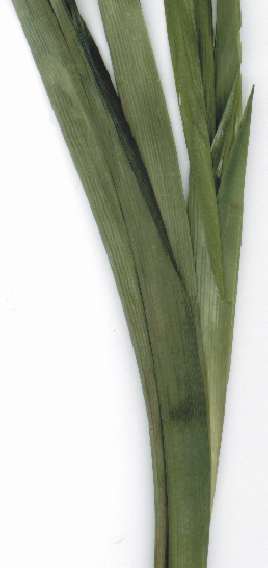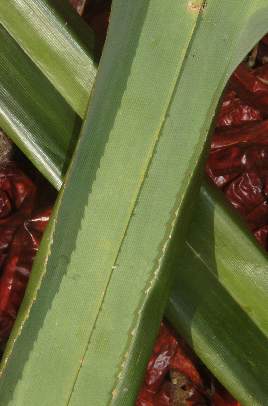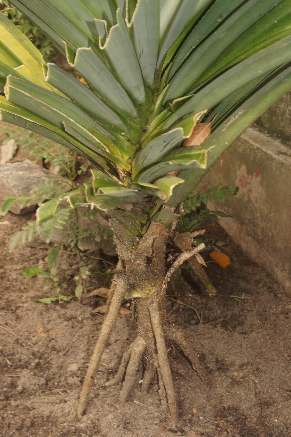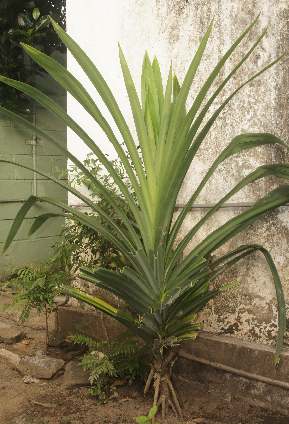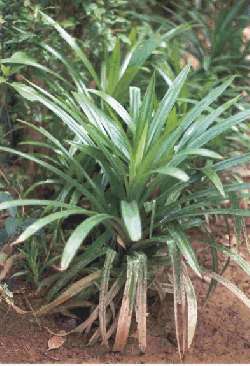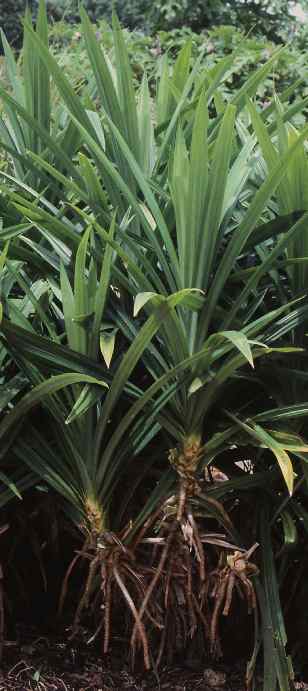
|
|
Pandanus plants with prop roots
Photo: Ben-Erik van Wyk |
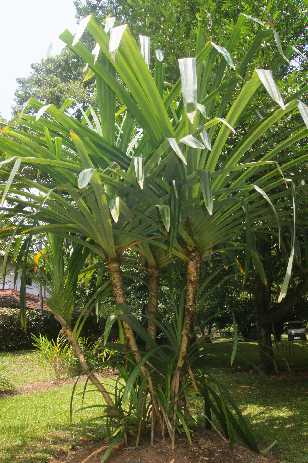
|
| Pandanus tree in a Sri Lankan park |
From the Indian subcontinent, I know only of few applications for pandanus leaves. They are commonly employed in Sri Lanka for Singhalese vegetarian or nonvegetarian curries and also cooked pulses, in any case often together with curry leaves. Since they are not wilted before usage, they provide hardly any flavour. Although there are scattered reports of their usage in South India, I have never seen them actually used in India, nor have I seen the plant growing anywhere. Most Indian cookbooks, understandably, do not mention this unique spice.
Pandanus leaves have their center of usage in South East Asia: In Thailand, Malaysia and Indonesia, pandanus leaves are valued because their fragrance enhances the flavour of rice. Plain rice cooked in coconut milk and flavoured with pandanus leaves is a delicacy even when eaten alone; with only a few more ingredients, the Indonesian specialty nasi kuning (see turmeric) is arrived at. Most delicious is rice steamed in small baskets made from pandanus leaves, as often prepared in Indonesia. Pandanus leaves are very popular on Bali (see Indonesian bay-leaf).
The nutty, intensive taste of pandanus reminds of the best aromatic rice cultivars (for example, Thai jasmine rice known as khao hom mali [ข้าวหอมมะลิ]) in South East Asia. Lesser rice varieties are often cooked with pandanus leaves to simulate the flavour of the expensive types. Some books state that, used in this way, pandanus leaves impart not only flavour, but also green colour to the rice; yet I have never observed this happen (see also annatto about vegetable food colourings).
In Thai cuisine, pandanus leaves are occasionally used as very fragrant
wrappers. Pandanus chicken, gai hor bai toey [ไก่ห่อใบเตย], is a classical
recipe and an eternal favourite in restaurants: Marinated chicken bits are
wrapped in pandanus leaves and deep-fried
in a wok. Although the leaves are too hard to eat, they impart a most exotic
aroma to the meat.
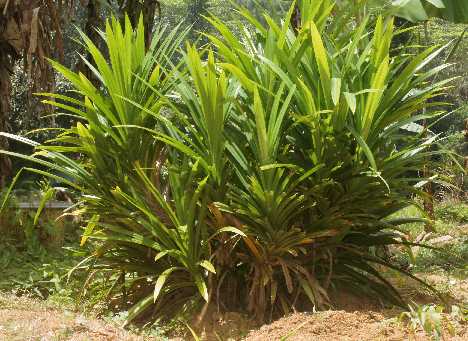
|
| Shrubby Pandanus plant (small growth form) |
All over South East Asia, pandanus leaves find their most important culinary application in desserts: In Thailand, iced drinks from young coconuts with pandanus flavour are popular, and in Indonesia, pandan leaves are made into ice cream like concoctions (es pandan, see also vanilla on the topic of ice creams). Furthermore, pandan leaves appear more frequently in sweet puddings or custards based on sticky (glutinous) rice. For these concoctions, glutinous rice is boiled with water, palm sugar and pandanus leaves to yield a heavy mass that becomes semi-solid on cooling. Before serving, thick coconut milk is sprinkled over it. It is often possible to substitute pandanus by vanilla or nutty flavours (e. g., hazelnut extract) in these recipes, although the flavours are not too similar.
Since the leaves cannot be dried without total loss of fragrance, many cooks
prefer an essence (Indonesian: pandan,
Thai: toey [เตย]).
Typically, the essence is bright green because of food dye
added; this colour fits well to the South East Asian habit of having intense,
unrealistic colourings for all types of sweet snacks, but it’s a nuisance
if one wants to flavour spicy foods with pandanus extract.
